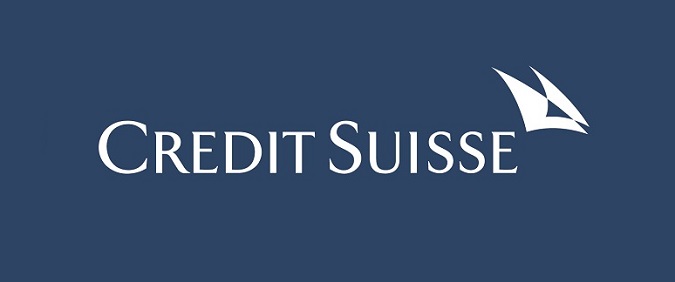Demographic trends make appropriate investment strategies more important than ever for pension funds

Credit Suisse study on the challenges facing Swiss pension funds
Credit Suisse economists and strategic investment consultants who advise the bank’s institutional clients today published a study entitled ‘Swiss Pension Funds 2014 – Perspectives in Demographics and Asset Management’. The study is based on a survey of more than 250 Swiss pension funds. The results indicate that in addition to the low interest rate environment, demographic ageing poses the greatest challenge for pension funds. In this context, representatives of pension funds especially regard the excessive minimum conversion rate as problematic. As a result, the vast majority of them welcome the Swiss Federal Council’s proposal that the minimum conversion rate should be reduced. Despite Switzerland’s ageing population, Credit Suisse economists do not expect 2nd pillar total capital to decline by 2050. They also believe that Swiss pension funds have the potential to improve the efficiency of their asset allocation. The study shows that a long-term investment horizon is beneficial for pension funds in particular. However, many pension funds pursue investment strategies with a short-term focus. Overall, most pension funds demonstrate a high level of cost consciousness – taking account of a range of cost factors – although they generally take the view that the scope for cost savings has largely been exhausted.
Following a prolonged ongoing period of low interest rates – and with the baby boomer retirement wave now beginning – 2nd pillar pension funds currently face a number of challenges. In the latest issue of the study on Swiss pension funds, Credit Suisse economists and strategic investment consultants who advise the bank’s institutional clients analyze major challenges identified by the pension funds surveyed: demographic ageing and management costs. They also look at the advantages offered by a long-term investment horizon and a variety of risk management strategies.
Majority of pension funds support “Old-age Provision 2020”
Over half of the pension fund managers surveyed regard demographic ageing as one of the major challenges that exist. 82% of the survey participants take the view that demographic ageing, combined with an actuarially unsustainable minimum conversion rate, are further intensifying the problem of redistribution from active insured persons to pension recipients. Many pension fund representatives also regard demographic trends as a challenge because, according to 63% of those surveyed, they create the need for higher savings contributions or a reduction in benefits (50%) in the form of lower pensions and/or a rise in the retirement age. In this context, the majority of pension fund representatives surveyed are in favor of the Swiss Federal Council’s package of reforms (‘Old-age Provision 2020’): 57% of respondents are in favor, with another 16% strongly in favor. Of the individual elements of the package, the most popular are the proposed retirement age of 65 for both men and women (63% strongly in favor) and the reduction of the minimum conversion rate to 6.0% (64% strongly in favor). The only proposal rejected by a majority is the setting of the minimum retirement age at 62 (56% against or strongly against).
Population ageing leads to slower capital accumulation and little change in asset allocation
Modeling carried out by Credit Suisse economists in the study shows that by the year 2050, population ageing is likely to lead to a slower rate of 2nd pillar capital accumulation but not to an absolute reduction. Although the annual difference between contributions paid in and benefits paid out could be negative, investment returns should more than compensate for this gap. However, all the demographic scenarios examined in the study point to a substantial slowdown in capital growth, particularly between 2020 and 2035. The impact that an ageing population has on the risk capacity of pension funds means that it also influences asset allocation. Specifically, pension fund representatives anticipate a slight fall in the allocation to equities over the long term. The authors of the study show in their calculations that as the average age of active insured persons rises, there is a statistically significant – but up to date very moderate – negative effect on the proportion of equities held by Swiss pension funds. They do not, therefore, expect to see any fundamental change in asset allocation at Swiss pension funds in the future as a result of demographic trends.
Pension funds do not fully exploit the available diversification potential
In view of the challenges that currently exist, the investment strategies adopted by pension funds are of considerable importance. Around 54% of the pension funds included in the survey use portfolio optimization when defining their investment strategy. The application of modern portfolio theory, as developed by Markowitz, has become established here as the standard approach. This method uses the advantages of diversification across various asset classes to construct portfolios that are risk/return optimized. The study shows that it is not possible to implement theoretically efficient asset allocations because of the regulatory requirements for Swiss pension funds. However, Swiss pension funds do not seem to be fully exploiting the diversification potential that is available even within this regulatory framework. This may be due to the application of stricter internal guidelines by the pension funds that impose additional caps on investments in certain asset classes, or the tendency to invest disproportionately in domestic asset classes (‘home bias’). Moreover, in the case of some asset classes (e.g. real estate), pension funds may be unable to find suitable investment properties in the market.
Long-term investment horizon proves beneficial
A longer investment horizon has advantages for investors, as the study shows. As expected, price fluctuations in Swiss equities were greater than for bonds between 1900 and 2012. However, the longer the equities were held, the less average yields varied. After a holding period of 14 years, there were no negative returns. This finding can also be applied to other asset classes. Pension funds clearly exhibit the characteristics of long-term investors. However, the survey shows that in reality, only 39% of pension funds base their investment strategy on a period of more than five years. 59% reported a relatively short-term investment horizon of two to five years, and 36% of pension funds have changed their strategy three to five times over the past ten years. More than half of the pension funds cited the financial crises and the inclusion of new asset classes as the main reasons for these changes.
Pension funds demonstrate a high level of cost consciousness
The survey found that Swiss pension fund managers demonstrate a high level of cost consciousness – taking account of a range of cost factors. More than half of the pension funds regard costs as important or very important, even if they are not currently the main focus of attention at some funds. A further 38% have already examined the question of costs conclusively. Based on these findings, it comes as no surprise that pension funds believe the potential for cost savings has been more or less exhausted. The majority of pension funds also indicated that diversification and net returns were more important criteria when choosing investments than reducing asset management costs at any price. The study’s authors consider this to be a sensible philosophy because it is not only asset management that gives rise to costs; lost sources of income and unexploited diversification potential also represent substantial opportunity costs.
Enquiries
- Media Relations Credit Suisse AG, Tel. +41 844 33 88 44, media.relations@credit-suisse.com
- Credit Suisse AG
- Credit Suisse AG is one of the world’s leading financial services providers and is part of the Credit Suisse group of companies (referred to here as ‘Credit Suisse’). As an integrated bank, Credit Suisse is able to offer clients its expertise in the areas of private banking, investment banking and asset management from a single source. Credit Suisse provides specialist advisory services, comprehensive solutions and innovative products to companies, institutional clients and high net worth private clients worldwide, and also to retail clients in Switzerland. Credit Suisse is headquartered in Zurich and operates in over 50 countries worldwide. The group employs approximately 45,100 people. The registered shares (CSGN) of Credit Suisse’s parent company, Credit Suisse Group AG, are listed in Switzerland and, in the form of American Depositary Shares (CS), in New York. Further information about Credit Suisse can be found at www.credit-suisse.com.Disclaimer
This document was produced by and the opinions expressed are those of Credit Suisse as of the date of writing and are subject to change. It has been prepared solely for information purposes and for the use of the recipient. It does not constitute an offer or an invitation by or on behalf of Credit Suisse to any person to buy or sell any security. Any reference to past performance is not necessarily a guide to the future. The information and analysis contained in this publication have been compiled or arrived at from sources believed to be reliable but Credit Suisse does not make any representation as to their accuracy or completeness and does not accept liability for any loss arising from the use hereof.













